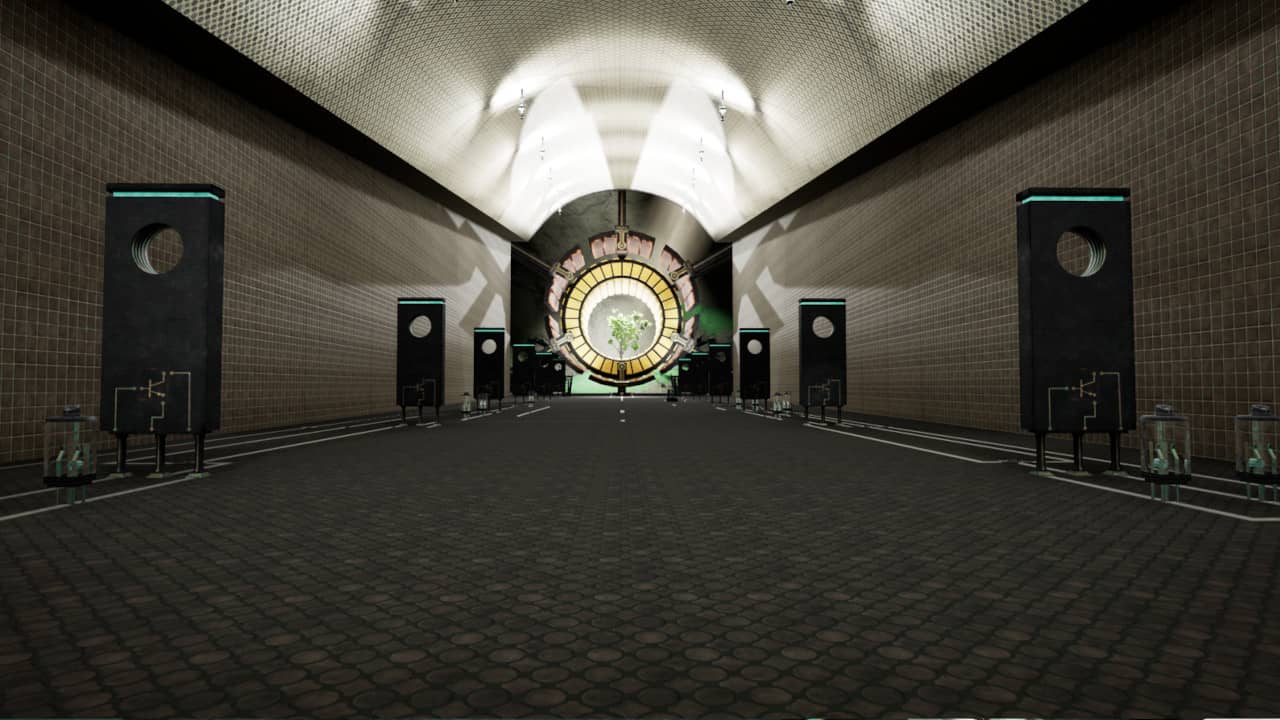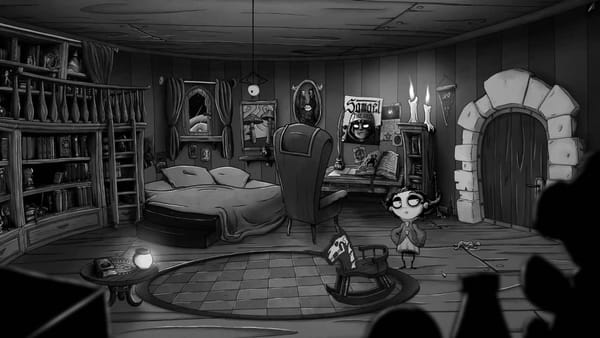Though this is a The Long Gate review, I’ve opted out of using the new format with scores, pros and cons and what-not. Why is that? Irrespective of whether reviews are subjective or not, I can’t give a fair assessment of something where I haven’t even scratched the surface.
If time was on my side, would I have progressed further in this puzzle title on the Nintendo Switch? Possibly, at least, that’s the plan as this game is no longer a review title, but a project. It’s quite possibly one of the hardest games I’ve played. That’s a personal thing, as perhaps this might be your type of puzzle game.
The Long Gate is an ambiguous piece. Knowing little about it until pressing start, there isn’t anything forthcoming in terms of story, direction, or tutorials – it was minimalist, to say the least. Usually, I like this sort of thing, but it was mildly testing on what to do. After pacing back and forth after sliding down what seemed like a sewer system, followed by a leap of faith (for lack of anything else to do), it was time to experience this innovative puzzle game.
The Long Gate Review
From a first-person perspective, you’re provided with a futuristic device that can manipulate items through telekinesis and activate switches. Though there is zero explanation in the reason for you being here, there are tips etched into the floors, resembling circuit boards, hinting at how to power up a lift to reach the top – stopping off at each level in an increasingly tricky setting.

After the initial hurdles on playing the game, it becomes relatively straightforward what you’re supposed to do, but it’s how that was the issue. Faced with engineering like puzzles of connecting power supplies using malleable cables and units that represent AND, OR and NOT, those interested in the field may find it child’s play. For me, it was something I couldn’t comprehend for a great deal of time – even now.
In short, and not the best explanation, 1 represents on, 0 is off. Using the above items by dragging them about with your Portal-like gun, you have to connect each article to power up the floor, serving as a lift. As there isn’t a timer present of any enemy threats, you can take as much time as you like, and it’s encouraged to experiment with whichever puzzle you wish, though note the source of power and where it’s coming from.
It seemed like an age playing the same floor, dragging and dropping items about clumsily, hopeful that if you throw enough mud, it’ll stick. It would work on the odd rare occasion, but then moving to the next puzzle would create that same scenario of guesswork. Leaving the game and coming back to it, I’m unsure if it was the break, but I started to get it. The satisfaction of seeing the floor light up green was fantastic – a genuine sense of euphoria – I did that! Then, reaching the next floor, it starts again, and it’s almost a one step forward, two steps back moment.
Reverse Engineering
This review without a score isn’t a reflection on the quality of the title from Inductance Games either. Admittedly, I am a bit on the fence as I couldn’t seem to make progress, but that’s to do with my ability and not The Long Gate – even if some of the controls and aiming feels a little fiddly at times. During the opening sequence, I was pretty surprised at the quality of the presentation – it’s one of the better Switch examples, as often the first-person titles look a bit naff (House Flipper, for example). The music, too, was excellent. There was an enigmatic quality to it that felt dynamic as you progressed.

But remember that I haven’t finished it, and anticipate that this will take me some time. Without going too much into it, I have difficulty with numbers, notably sequences, and as noted in some of my walkthroughs that feature these sorts of things, I take a lot more time with them as almost impossible for me to comprehend. That said, I don’t have an issue in being objective about The Long Gate.
This is one of the most challenging and intelligent puzzle games I’ve played. It’s fascinating to learn how these machines work – both digitally and the analogue ones, too – once you get there. It’s nice not to have a timer to compete with or any surplus hazards, but I wouldn’t deem this a relaxing game just because you have free rein. That said, it wasn’t stressful either, but that was probably me mentally shutting each downtime when faced with the numbers.
Irrespective of the above, The Long Gate is a game I’m sticking with. As stated, there’s a big payoff when you’ve solved a puzzle, and the mystery surrounding this underground complex is intriguing. Just be advised that’s there’s zero hand-holding here, and you’re very much on your own.










